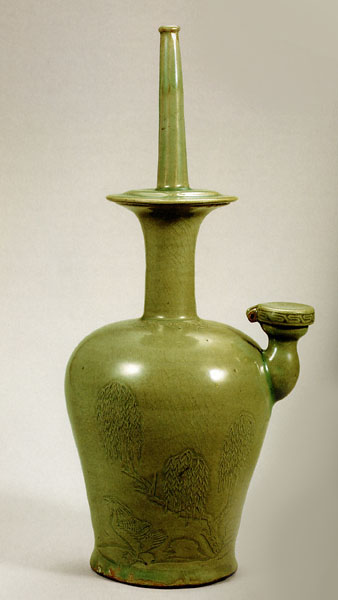
Kundika
Goryeo dynasty, mid-12th century
Celadon with incised design
34.2 cm (13.5 in) high
National Museum of Korea, Seoul
The kundika is a water bottle/sprinkler, initially carried by monks from India, that came to be used in Buddhist rituals; it is associated with the Water-Moon form of Bodhisattva Avalokiteshvara, who uses a willow branch to sprinkle the Water of Life from the kundika onto his followers. Just over a foot high, this example dates to the mid-12th century and is incised with figures of water birds and plants.
Korean celadon was prized in its time, as it still is today, for the clarity and color of its glaze. Unfortunately it was relatively short-lived; Korea's celadon industry was devastated in the Mongol invasions of 1231-1270, and was unable to recover in the following century. In the succeeding Joseon dynasty (1392-1897), Celadon was superseded in favor by Buncheong (Punch'ŏng) ware and white porcelain.


